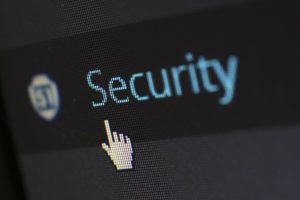Technology plays a pivotal role in people’s lives, and there seem to be some technological devices around people all the time. Technology has impacted many fields, and one that it has greatly transformed is education. The incorporation of technology into education, commonly known as EdTech, helps teachers to dispense knowledge efficiently and bring the best out of their students. Let’s check out some of the most impactful ways to incorporate EdTech in the classroom effectively.
Align Technology With Lesson Objectives
Before using EdTech in the classroom, you should consider the lesson objectives. Though technology plays a pivotal part in helping improve the learning experience, there are instances where traditional learning methods are more effective. When deciding whether to use technology in a classroom, ensure it is the most effective in attaining learning outcomes. If you perceive that the technology will not help in attaining the lesson’s aims, you can continue using the traditional teaching methods for that specific lesson. Some traditional approaches to dispensing knowledge are still effective and help students grasp concepts better. As a result, they can complete their schoolwork, such as essays, easily without needing help from an online essay writing service.
Create a Conducive Space
You will not get the desired results from EdTech if you do not have a space where students can effectively set up their devices and work independently. Before incorporating EdTech into a classroom, ensure the classroom is well-designed with charging points and stable Wi-Fi. Every student should have a working space where they can work independently without other students interfering with them.
Ensure Tasks Are Meaningful
When introducing EdTech, use applications and activities that require collaboration and critical thinking and help students generate meaningful products. Students will lose focus and disengage from the activity if the applications you install on devices are unstructured and lack concrete deliverables. It’s best to consider applications that students can use to improve and test their competencies. This strategy ensures the students constantly have positive engagements and their interest is maintained during the learning process.
Monitor Students’ Progress
Switching to technology in the classroom makes an educator’s easier, but an aspect always to consider is monitoring student’s progress. Progress should be monitored to ensure they efficiently use the technology and attain the desired learning outcomes. When students are left to use the educational apps independently, it is easy for them to wander and start doing distractive activities like playing video games on their devices. Closely monitoring a student’s progress keeps them on track and helps you highlight areas you feel the student can improve.
Present Knowledge in a Modern Way
Teachers should take advantage of technology to present information in a modern way. Rather than just talking, you can use slides and videos to create an interactive presentation to enable learners to grasp concepts easily. Videos and PowerPoint are visually engaging tools and can be used to supplement the daily lectures.
Address Digital Distractions in the School Policy
Even though tech gadgets will help students learn efficiently, they are also associated with distractions. The distractions can lead to reduced productivity or less knowledge acquisition. Consequently, the distracted student will have difficulty in completing schoolwork and might even pay EssayWriter.org for research paper. Thus, when introducing EdTech in the classroom, ensuring that these distractions are clearly highlighted is integral. Students should be warned about them and the risks associated with the distractions. This information in the school policy will help reinforce the message to students, and they will remain focused on using their gadgets appropriately.
Provide Equal Opportunity for Every Student
Before introducing tech devices in the classroom, ensuring every student has access to the requisite gadget is important. Proceeding with this initiative when other students do not have the necessary gadgets will create inequality in the learning environment. If a school wants to incorporate tech in learning, it should distribute the same devices to every student. Providing different devices to different students can create an environment where some students feel disfavored, which can affect their academic engagement.
Encourage Students to Use EdTech to Complete Their Homework
The use of technology in learning should not end in the classroom. Students should be encouraged to use technological applications to complete schoolwork. It can be achieved by providing them with assignments to complete using their devices. An example is giving homework to create a poster using a specified software or creating a visual aid. As students continue to undertake numerous projects with their devices, they will improve their competencies in using technology in education.
Listen to Teachers’ Concerns
Many concerns regarding the integration of tech in the classroom are how students will be impacted, but sometimes, teachers are equally impacted. Teachers are not all-knowing; in some instances, they might be hesitant to incorporate certain technology into learning. Change is often a difficult process, especially when there is a need to change an already working system or introduce new ways of doing things.
Schools should consult teachers, listen to potential concerns, and find ways to address them before introducing specific technologies in learning. If teachers have various concerns, they will be unable to attain the desired goals of the introduced technologies. Addressing their concerns will help them see the new technology as a positive addition to the learning institution and be ready to integrate it into the learning program.
Provide Training
It is important to provide training to ensure teachers are well-equipped with the knowledge and skills to use EdTech. Training is essential when incorporating technology to enable teachers to understand better which applications they should use with their learners and how to engage them in the new environment better. This training will result in better overall results.
Closing Remarks
With the increased use of technology to accomplish different tasks, educators should also take advantage of and use it to improve learning outcomes. An important aspect to consider is that EdTech is not here to replace traditional learning but to support it. Teachers should ensure they have the right applications to keep students engaged and focused. In addition to having the right applications, teachers should monitor students’ progress to keep them on course to attain their learning goals.
















